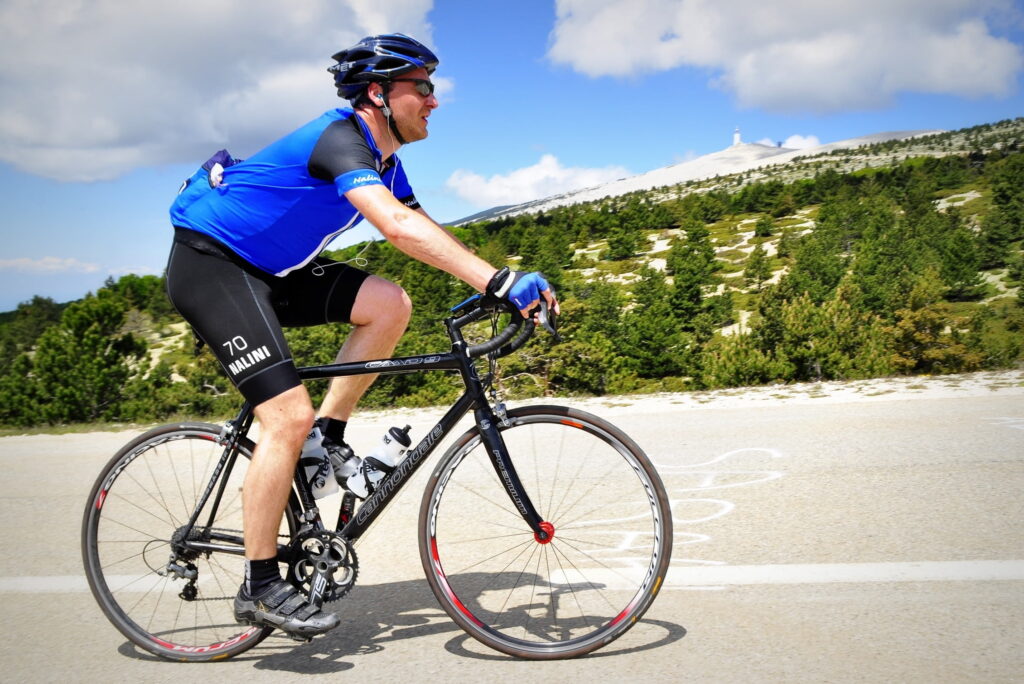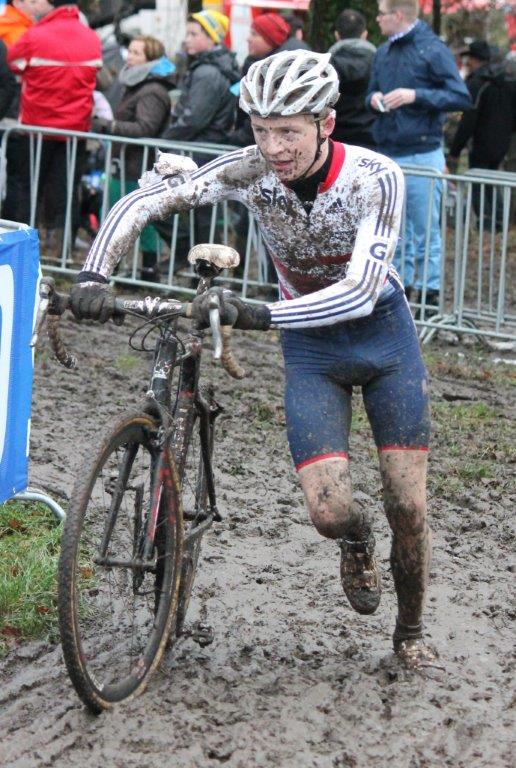If you are training for a sportive these tips will help you to achieve your goal. Novice or expert, knowing how to train for a sportive will make the experience much more enjoyable.

Choose your sportive wisely
Your first task is to choose a suitable event. If you are an inexperienced rider or haven’t previously ridden a sportive you should select an achievable goal. Riding the Haute Route Alps is extremely difficult and takes several days so this isn’t one for the novice. But the Tour Essex 42 miler over flattish roads might be a better entry into the world of sportives.
When choosing your event do give yourself enough time to prepare. If you are riding regularly and rack-up a good weekly mileage you might not need too much preparation. Conversely, if you are getting the bike out of the shed after years of neglect you’ll need substantial training. Everyone is different but I would recommend at least 12 weeks of training to gain adequate fitness.
Every sportive rider should examine the route of their chose event very carefully. The Suffolk Sportive 50 has just 487 m of climbing whereas the Struggle Dales totals 2874 m! If you struggle with steep climbs or your bike doesn’t have suitable gears a hilly sportive will be miserable. Experienced riders will relish the hills and completing a tough mountainous sportive is a badge of honour. Just make sure you are prepared for it.
Invest in a good package of equipment
Sportive riders need to invest in a good equipment just like racing cyclists. That doesn’t mean that you have to buy the best of everything, although this can be part of the fun. What you must do is buy all the things you need and ensure they are of sufficient quality. A fairly basic well-maintained bike is good enough to train and compete on. You’ll also have money to spare for clothing, tools and an indoor trainer. Don’t make the mistake of blowing your budget on a top flight bike with nothing to spend on other essentials. As you get into the sport you can gradually upgrade to a lighter bike and faster wheels.
An area where it is worth spending money is on your contact points: gloves, shoes, shorts & saddle. If you look after these then you’ll find you accomplish more training and lose fewer days to injury.
Learn to ride in a group
Much of the energy you expend when riding a bike is used to overcome wind resistance. In fact, the power needed to overcome drag increases with the cube of your speed. If you can reduce your drag, the energy savings over even a short sportive will be significant. One way to do this is to buy aero equipment but many sportive riders neglect the simplest solution: group riding.
I’ve witnessed plenty of people grinding into a headwind one-by-one when they could have formed an efficient group. The reason for this is unclear. Maybe they don’t appreciate the drag saving benefits of group cycling or perhaps they are nervous about close riding. This is why I recommend doing some group riding when you train for a sportive.
You can learn the necessary skills on a local club run. Many clubs have easy paced rides with a café stop which are friendly and unintimidating. As you build confidence you can seek out faster paced training rides and learn to hold a wheel at speed. British Cycling have a club finder on their website
Polarise your training
Polarised training is a buzzword at the moment but it has been around for many years. I started recommending polarised training over 20 years ago and it has proven its worth many times over. But what is it?
You may have heard of the 80:20 rule. That is, 80% of your training should be low intensity endurance riding. The other 20% is high intensity interval training (HIIT). The 80:20 rule is only a rough guide and some deviation is permitted. But you should try to follow the essence of it when you train for a sportive.
In practice this means that you should focus on building very easy volume in your endurance training zone. You might be tempted to increase the pace in these sessions but they should really be long slow distance (LSD). This equates to Zone 2 of the British Cycling 5-zone system. If you live in a hilly area, fit low gears so you can keep heart rate down on long climbs. Don’t worry about power, the key is keeping your heart rate down.
As you build your volume you should then introduce some form of HIIT. You can actually mix in a little medium intensity training (MIT) for variety. This could take the form of some tempo riding on climbs in Zone 3. For HIIT sessions, you’ll need to work much harder. A good guide is to aim for 90-95% of maximum heart rate. Pyramids can make for a good HIIT session to lift your VO2max. Try 5-4-3-4-5 minutes with 2 minute recoveries to start with.
I understand that for many people who train for a sportive, HIIT may sound daunting. I accept it isn’t for everyone. However, if you are going to be doing some of the most challenging sportives with the steepest climbs it really can help. Of course, you should only perform HIIT if you are in good health. Please get a check-up with your doctor if you are in any doubt.
Make a pain cave
If you haven’t heard this term it does sound a bit odd! This is the current description many riders are using for their indoor training set ups. A pain cave can seem a bit intimidating but it doesn’t need to be. The pain cave can actually save you a lot of pain!
The advantage of indoor training is that you can perform HIIT in a safe environment. You can focus purely on your effort with no concerns about traffic or colliding with street furniture. If the weather is poor and the roads are slippery, outdoor HIIT can be dicey.
Of course, poor weather is also unpleasant and can be pretty miserable. This is where the indoor trainer is a much more attractive prospect and will help you to train more regularly. I believe the biggest factor for success when you train for a sportive is consistency in your training.
Indoor smart trainers are excellent for doing controlled fitness tests. If you don’t have a power meter on your bike you can obtain useful data for setting your training zones. They also allow you to track your progress through the training cycle and monitor fatigue.
Subscribe to a virtual cycling app and your smart trainer becomes a great motivational tool. You can ride with other people, test yourself over virtual courses and even complete races. With increasingly more realistic real world roads and climbs being added, these apps can be valuable preparation for your sportive. If you’ve never ridden Mont Ventoux why not ride it virtually before doing the real thing?
Plan backwards from the event date
You might think this obvious but so many people fail to plan ahead. I mentioned above how it is important to choose a sportive wisely and allow yourself enough time to prepare. This is crucial to your success but you also need to work back from the date and plan your training.
When you train for a sportive break your training into discreet phases but don’t worry about periodisation theory. It’s generally good-enough to plan phases according to your calendar and a bit of logic. For example, prior to the event it is worth tapering a little so you have fresh legs. Reduce training volume over 7-14 days but maintain some intervals to keep your top-end fitness. Prior to this it would be a good idea to do some simulation rides with some of the characteristics of the sportive. You should continue this process back to your starting date to ensure you cover everything in training. If you have a coach they can, of course, help you with this process.
Embrace hills and headwinds
Nobody said this would be easy, did they? You will find cyclists who enjoy hills and you will find many more who don’t! When it comes to headwinds I don’t think anyone likes them. But when you ride your sportive, whether you like hills or headwinds, you are likely to have to tackle them. You will find that it pays to practise this kind of riding when you train for a sportive.
Earlier I wrote that it is useful to ride a little bit of tempo to add variety to your polarised mix. I also stated that it is a good idea to do some simulation rides prior to the big event. Use hills and headwinds for your tempo riding. You can break the session into intervals e.g. 4 x 10 mins with 3 min easy recoveries. Or you could perform longer continuous efforts of around 20-30 minutes as block spread throughout your ride.
Ride into a headwind with a low torso tucking down on the hoods or in the drops. This will help you to reduce drag. You’ll have to gear down but try to pedal smoothly and don’t drop below 80 rpm.
You will have to employ more technique on hills. Again, adopt a gear that allows a fluid cadence and aim to ride in Zone 3 for MIIT and Zone 4 for HIIT intervals. There is much debate about whether it is better to climb seated or standing. I won’t get into that here, but it is worth training both options. You should vary hand position too to find what works best for you. Personally, I prefer the tops for seated climbing and the drops when I stand, but everyone is different.
Climbing at a low cadence in a big gear may help you to build strength. There is some debate about this amongst cycling scientists but I find it works for most of my riders. Climb seated at 40-60 rpm in Zone 3 with 2 min repeats with equal recovery. Gradually build the number and duration of repeats.
Keep progressing
Everyone finds they make great gains at the start of a training programme and then they diminish. If this happens to you it can be disheartening and demotivating so you need to find ways to maintain progress.
Goals can give you something to aim at and are motivating if they are achievable. Identify ‘stepping stones’ along the path to your goal. This could be an increase in the number of interval reps in a strength session. You may also aim to increase the length of your weekly endurance ride, to give just two examples. Small, achievable stepping stones build to big strides.
There is a saying that goes ‘ Do what you always did and you’ll get what you always got’. This is true when you train for a sportive. Don’t discard everything but aim to incrementally evolve your training. You can achieve this by adding variety to your sessions to prevent boredom and to test your physical abilities.
Maybe go away for a weekend to find new and challenging roads or train with a faster group. Introduce new HIIT sessions such as pyramids (regular or reverse) and ascending or descending steps. You could always try some endurance x-training by mixing in other endurance sports such as running or swimming.
Resistance training is a great supplement to endurance cycling. It not only builds strength in the key pedalling muscles but can be used to develop core strength and stability.
Whatever you do, be imaginative and record what does and does not work for you. If you lack ideas try employing a coach.
Monitor your fitness
Testing your fitness will help you to design your training, set goals and ensure good progression. If you perform the right test and do it well you should obtain good quality objective data. However, fitness tests do have their limitations. Testing can be time consuming, taking you away from normal training. And, like a race, if you don’t nail it then you can’t trust the results.
I do perform tests with my coached riders but much prefer to monitor their training data. Look at your intervals. Have you been performing them at a higher power output? Is your heart rate lower during an endurance ride for the same perceived effort or power output? Can you get up your regular climb quicker than you did last month? There are all kinds of data that you can use apart from fitness tests that will provide clues about your progress.
Not everyone has access to power measurement but if you do there is plenty of analytical software available. However, do be careful with training stress scores, normalised power and acute training loads. In my experience they can be quite misleading and you should treat them with caution.
Summary
Training for a sportive can be both exciting and, at the same time, quite daunting. But, there really is very little to worry about if you follow my advice and plan well in advance. The key is choosing an event which is within your capabilities and ensuring you have adequate time to train. Provided you then build good structure and progression into your training you should arrive at the sportive in great shape. The event itself will still be a challenge, that’s the whole point. However, the experience will be so much more enjoyable knowing you have the fitness to make it through.


